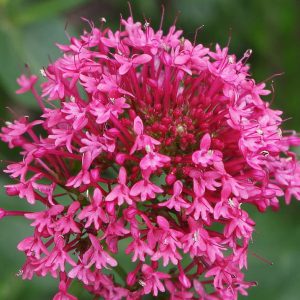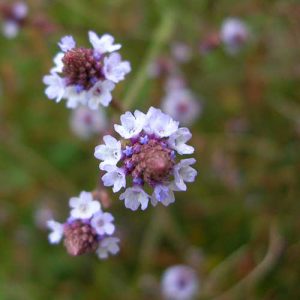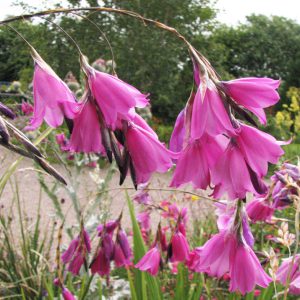- 1-9 pkts $4.50
- 10 pkts FREE
- Express post $12
Anemonella thalictroides
CRYSTAL ANEMONE
Anemonella thalictroides is often called “The Crystal Anemone” because of the crystalline, pure beauty of it’s late winter-early spring flowers.
Like frost crystals of exceptional tecture and substance
Crystalline pure beauty in late winter
Anemonella thalictroides has a long blooming season, commencing in late winter and continuing on through spring.
So it is often one of the first treasures in our garden to tell us that winter is on the wane.
The white, dainty pinwheel style blooms are sometimes tinged pink, particularly when the winter days are frosty and cold.
But then the blooms become like white snow crystals as the spring days warm.
Long blooming & weather hardy
The waxy blooms are in fact very weather hardy even in winter tempest, as the petals are substantial despite their delicate appearance.
Large flowers on a dainty, fine, ferny plant
The Crystal Anemone has a long flowering season and naturally grows in the wild on woodland slopes and ridges down the eastern parts of North America.
And the flowers are large scale for such a dainty, fine, ferny plant.
Lacy fine foliage
Anemonella thalictroides is an excellent foliage asset in the shade garden, as it has dainty, lacy little leaves just like a miniature Thalictrum (hence the second part of it’s botanical name).
There is even a botanical move afoot to reclassify it as part of the Thalictrum family.
But at the moment it is best described as having flowers like a very early little Anemone and leaves like a little Thalictrum.
It is summer dormant so do not fear you have lost it – it will be back next winter to enchant once again like frost crystals.
SEED SOWING ADVICE: Anemonella thalictroides
Seeds for Anemonella thalictroides are best sown during late autumn, winter and early spring.
They require a period of moist warmth first, followed by a period of moist cold, then return to moist warmth.
So they are best sown in a punnet indoors.
Indoors: First sow the seeds on the surface of good quality seed raising mix.
Then barely cover the seeds with a thin sprinkle of sieved mix or fine grit.
Now thoroughly moisten the punnet by standing it in a shallow water bath and allowing the moisture to percolate up to the surface of the mix from below.
Then place the moist, sown punnet in a cool, well-lit position (not in any direct sunlight) for 2-3 weeks.
Day temperatures of 18-22C are ideal for this preliminary stage.
It is fine if it cools down at night, though not essential.
So it is fine to use a heat mat if you have one, to maintain warmth.
Continue to keep the punnet moist by misting from a spray water bottle as required.
Covering the punnet with clear plastic, or glass cover helps greatly to maintain consistent moisture and prevent drying out.
These seeds do not consistent moisture in both the warm and cool phases to break their natural dormancy cycle.
Give a pretend winter
Then after 4 weeks, enclose the moist punnet in cling-wrap or a plastic bag and place in the fridge (not freezer) for a further 4-6 weeks.
Now after the period of chilling, remove from the fridge, moisten again, and place again in a cool, well-lit position (not in any direct sunlight).
Temperatures of 10-15C are best for rapid and optimum germination at this stage.
Seeds begin to germinate in 40 days approx. and seed sprouting is usually staggered.
So some seeds are likely to come later.
Because the staggered germination is a natural trick by the plant to give individual seeds a sporting chance of germinating during favourable conditions
So patience – do not discard the punnet too quickly.
Outdoors: Or if all of the above is too much palaver – sow them in a punnet in autumn.
Thoroughly moisten, cover the surface with grit and enclose in fine mesh so birds and mice cannot rob the seeds. Place them in a shaded, cool place such as a fernery or shadehouse. Continue to keep moist. And leave the cold of winter and the course of nature to do the job.
Check next spring for germination.
Seed Count: 3 seeds per pack (seeds of this treasure are scarce).
GROWING: Anemonella thalictroides
Height with flowers: 20cm approx. in full winter-spring flower
Width: 20cm approx. forming a bushy little perennial clump of delightful foliage.
Position: Anemonella thalictroides enjoys Shade or Dappled Light underneath either deciduous or evergreen trees and shrubs. It is a favourite under large Camellias.
Despite a delicate appearance it is a tough little customer in woodland conditions.
Soil: Will tolerate a range of soil conditions but must be well drained.
It loves leaf litter, compost, well rotted manure and typical humus rich woodland conditions.
Frost: Robustly frost hardy even in hard, severe frosts. But can also tolerate summer humidity.
Growth: Long-lived perennial clump that forms an underground tuber.
So it retreats from summer heat and copes with drier conditions in summer by going dormant and subsisting on the hardy underground tuber until the moister cooler days of autumn return.
Bees & Birds: The late winter blooms are a great boon and very popular with bees as well as all types of beneficial pollinators.
Care: Easy to grow in shade and very little to no maintenance required.
Deer & Rabbit resistant: Happily Anemonella thalictroides is left alone by deer and rabbit because they find the growth unpalatable.
Origin: Native to woodlands and scrubby areas in the eastern regions of North America.
Click here for our Nursery Open Days & Open Gardens Information
https://www.gardivalia.com.au/open-gardens
Click here to go back to Seeds Shop
https://www.seedscape.net.au/shop/
Related products
-
Add to WishlistAlready In WishlistAdd to Wishlist
-
Add to WishlistAlready In WishlistAdd to Wishlist
-
Add to WishlistAlready In WishlistAdd to Wishlist
-
All
Dierama pulcherrimum
‘Rose Pink’
ROSE PINK
FAIRY FISHING RODS
SALE: Buy 1 get 2 packs
$5.00 AUD Add to cartAdd to WishlistAlready In WishlistAdd to Wishlist





